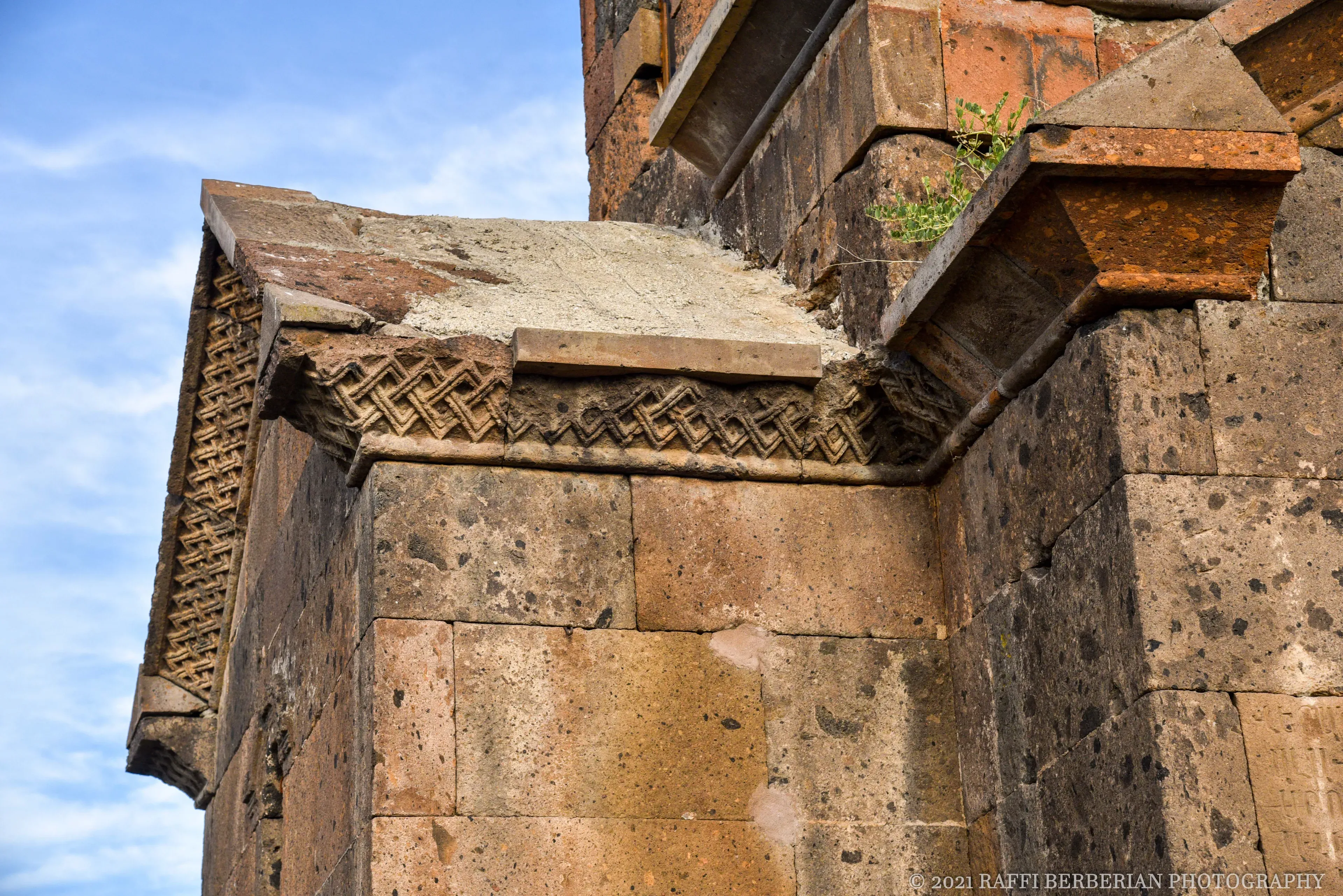In the northern part of the famous village of Oshakan on the edge of a little valley called Mankanots is here we find the 7th-century Church of Saint Sion, also known as the name of the valley, Mankanots, which means kindergarten or nursery. Unfortunately, there is no official inscription or documentation as to when the church was built, but based on its architecture it is estimated to be from the 7th century with a 9th-10th renovation because of ornamentation around the windows. The other theory is that it was built in the 9th-10th century using 7th-century architectural forms. The church is tiny with a cruciform, central plan. The exterior has four equally-sized rectangular arms in each of the cardinal directions with small triangular roofs in between. The dome is centered directly above the entire structure supported by an octagonal drum. Notice the stepped foundation going around the church. There is a single step visible except for the western side where up to three steps are visible! The single entrance from the west is framed by a decorative gabled arch with columns on each side, similar to the early 7th century Basilica in Avan, Yerevan, although substantially smaller. The interior is very dark, the stones seem to be stained black from the use of candles for over 1000 years! Standing in the center you can see four semi-circular apses, each separated by squinches leading up the octagonal drum. In the 1950s the church was restored. We have visited several other churches similar to this such as the Karmavor Church in Ashtarak and the St. Amenaprkich Church in Artashavan, both from the 7th century! Directly north don't miss the funerary plinth dated to the 6-7th century. It is believed to mark the grave of the Byzantine emperor Mauricius or his mother, but that is doubtful.
Recommended by Metaport















